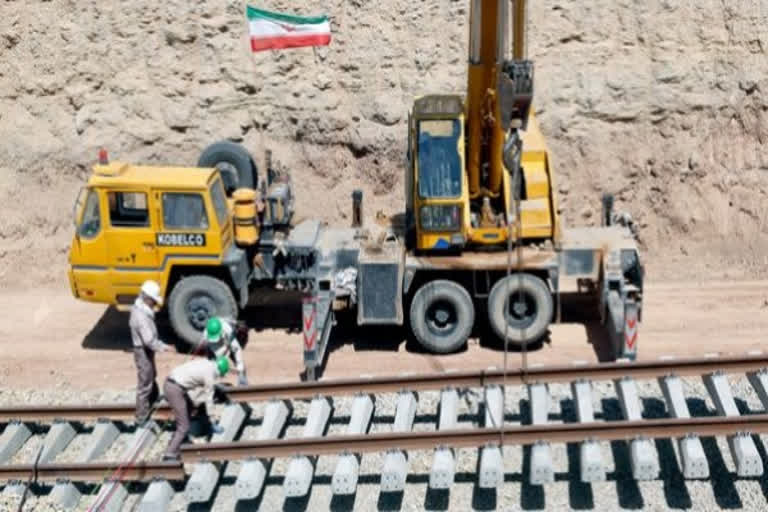New Delhi: The power play among the nations of the world has found a new playing ground in Iran—along the 628-km-long railway line that will connect the Iranian port town of Chabahar with the Afghanistan border town of Zahedan.
The move has taken place at a time when Iran and China are on the verge of signing a ‘still-not-public’ agreement that promises huge Chinese investment in Iran in return for a regular supply of Iranian oil at discounted rates and military arrangements among other fields of cooperation over a 25-year period.
Underlining the significance of the pact, Ali Aqa-Mohammadi, advisor to Iranian supreme leader Ayatollah Seyyed Ali Khamenei and also a member of Iran’s Expediency Council, told Iran state-controlled media on Monday that the ‘partnership roadmap’ solidifies the two countries’ economic and defensive cooperation by protecting their dealings from “third-party intervention”, in obvious reference to the US.
“This document (the pact) upsets the sanctions and the Iran-China roadmap dis-arranges many of the US plans,” Aqa-Mohammadi said adding that the pact “will help ditch the dollar in bilateral trade and bypass illegal and unilateral US sanctions”.
Significantly, this is happening at a time when India-US ties are getting proximate and there is talk of a ‘Quad’ naval alignment between India, US, Japan and Australia amid worsening India-China ties with the two Asian giants engaged in a series of military face-offs in eastern Ladakh.
IRCON OUT
Refusing to wait any longer for IRCON, an Indian state-owned PSU specializing in building railways infrastructure, to start work on the very vital railway line, the Iranian government has decided to go on its own, leaving India in the process.
Iran has already sanctioned $400 million from the Iranian National Development Fund to kick-start the project. IRCON had promised assistance worth $1.6 billion.
Work on the passenger-freight rail project started on Tuesday last week. Expected to provide about 16,000 jobs, the initial 150-km section will be ready by March 2021 while the full stretch will be completed by March 2022.
For India, active participation in the rail link was of strategic significance as it would have given it easy access to land-blocked Central Asia.
India is understood to have explained away the inordinate delay on unwilling equipment suppliers and contractors who were scared of attracting US-imposed sanctions.
BAD INDIA-IRAN RELATIONS
The move is an ominous one coming as it did in the backdrop of a recent frosting of India-Iran ties.
The Narendra Modi government’s August 5, 2019, abrogation of Article 370 and also declaring Shia Muslim-dominated Kargil to be a Union Territory clubbed with Leh, had not gone down well with Iran which protested vehemently. It was a departure from the traditionally warm India-Iran ties, in stark contrast to the stony silence that Saudi Arabia—Iran’s staunch foe—maintained on the 370 abrogation issue.
Nor was India invited to a major naval exercise “Maritime Security Belt” between Iran, China and Russia that ended on December 30, 2019, in the Gulf of Oman, with the port of focus being the Chabahar port where India has already invested substantially.
India’s growing proximity to the US and decision not to export oil from Iran in line with US sanctions has led the India-Iran relationship to a free fall. With more than 80 per cent of India’s oil requirement is met by imports, the country was the second-biggest buyer of Iranian oil after China. With Iran oil imports virtually coming to a stop now, India’s oil requirement is being met by the US and to some extent by Venezuela.
CHINA-IRAN ‘SECRET’ PACT
On the other hand, besides the obvious geostrategic angle, for energy-deficient China, Iran’s huge gas reserves are a very attractive proposition as China has the wherewithal and capability to stand up to the US and to defy the US-led sanctions against Iran.
While the Iran-China relationship, therefore, is going through a water-shed moment, the IRCON development comes amid an escalation of tension between India and China over a border row which has led to the huge mobilization of men and war-like material on both sides.
The Iran-China warming of ties comes in the backdrop of reports of a 25-year-old treaty being prepared by the two countries that will cover all aspects of their relationship in about 100 projects relating to military, security, economic, railways, ports, telecom, banking etc.
The treaty, aiming to override President Donald Trump’s sanctions regime against Iran on grounds of pursuing nuclear weapons technology, will see China investing a huge $400 billion in Iran over the 25-year period.
Reportedly, the pact also allows for Chinese military presence of up to 5,000 PLA soldiers to protect Chinese investment projects in Iran.
While the ‘pact’ to be called the ‘China Iran Comprehensive Strategic Agreement’, is facing domestic resistance in Iran by those who believe Iran is negotiating with China from a position of weakness, it cannot be denied that its geo-strategic implications on India will be substantial.



